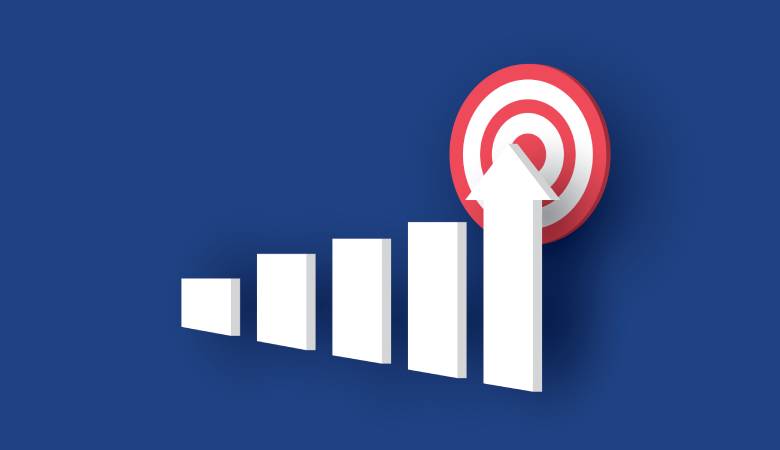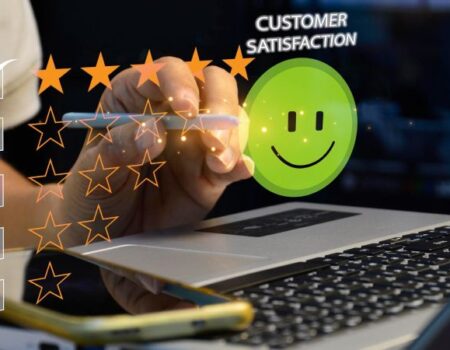Lead Scoring Unpacked: How to Recognize and Rank High-Value Prospects
One of the toughest challenges in sales is distinguishing between prospects genuinely interested in your product and those who are merely browsing. While you’re wasting time on unqualified leads, your competitors could be closing deals with your best prospects — this is where lead scoring becomes essential.
At first glance, lead scoring might seem straightforward. However, depending on your business model and the diversity of leads in your database, it can quickly grow complex.
To simplify this process, We’ll guide you through the fundamentals of building a lead score. This includes identifying the data you should analyze, pinpointing the most critical attributes, and outlining the steps for calculating a basic score.
Do You Need a Lead Scoring Model?
If you’re running a small business or startup, you might question whether a lead scoring system is necessary. While sales reps at smaller companies can sometimes rely on intuition to assess leads, this approach becomes unsustainable as your business grows.
Here are some indicators that it’s time to implement a lead scoring model :
- Your sales team has more leads than they can address promptly.
- Your sales team spends too much time on low-quality leads that fail to convert.
- Your sales reps lack a clear strategy for prioritizing leads in their pipeline.
- Your team’s closing rate is lower than desired.
Why Is Lead Scoring Important?
You might wonder if lead scoring is still relevant in today’s fast-evolving marketing landscape. The truth is, lead scoring remains as crucial now as it has ever been.
From our experience, lead scoring delivers better ROI for sales efforts by enabling a personalized and targeted approach. Data shows that 53% of salespeople find selling more challenging than it was a year ago. According to Mark Osborne, a B2B marketing expert and founder of Modern Revenue Strategies, tightening markets and longer sales cycles have made every lead more valuable.
Without a robust lead scoring model , Osborne warns, you risk losing business to competitors. “Smart competitors are quick to identify and prioritize high-potential opportunities,” he explains. “They provide unmatched personalized attention to win these critical deals.”
Lead Scoring Models
There are various lead scoring models , each leveraging different attributes and metrics to evaluate leads. Many scores are based on a scale of 0 to 100, but the specific model you create should align with the characteristics of your ideal customer.
Below are seven distinct lead scoring models based on the types of data you can gather from individuals engaging with your business. Select the one that best fits your marketing strategy and available data.
1. Behavioral/Engagement Data
If someone subscribes to your emails via a popup form, you still lack insight into their buying intent. However, open and click-through rates provide a clearer picture of their interest level. Analyzing behavioral data—such as how many emails they open and which ones—can reveal whether a prospect is truly engaged.
Similarly, a lead’s interaction with your brand on social media can indicate their interest. In social media it often drives high-quality referrals, making it a channel worth monitoring. How often do they engage with your tweets or LinkedIn posts? Do they comment, share, or click through?
These insights fall under implicit lead scoring, where interactions and behaviors are used to gauge interest levels.
2. Firmographic or Demographic Information
Are you targeting specific demographics, like parents of young children, or an ideal customer profile (ICP), such as CIOs? Including demographic (B2C) or firmographic (B2B) questions in your lead forms can help assess how well they align with your target audience.
For example, assign point values based on geography, job title, or industry. You can also ask intent-based questions like, “Why do you want to connect with us?” with multiple-choice options. This approach is known as explicit lead scoring , as it relies on information provided directly by the lead.
On the firmographic side, tracking external company data—such as leadership changes, M&A activity, or new investments—can provide valuable context about a company’s fit with your value proposition.
To avoid lengthy forms, consider using a data enrichment tool to automatically supplement submitted information.
3. Purchase Intent Model
In our experience, a lead’s website interactions reveal much about their intentions. The purchase intent model leverages intent data to assess a lead’s likelihood of conversion by analyzing web activity, behavior, and sometimes demographics.
Examine leads who eventually became customers: Which offers did they download? How many pages did they visit before converting? Historical data can help identify patterns, such as frequent visits to pricing pages or completing high-value forms like demo requests.
Both the number and type of interactions matter. For instance, assign higher scores to leads visiting key pages (e.g., pricing) or those with significant page views (e.g., 30 vs. 3). Conversely, deduct points for inactive behavior, such as ceasing website visits or ignoring emails.
4. Lead Sources
Though seemingly straightforward, evaluating leads based on their source is another effective scoring method. Most sales teams already know which sources yield the best leads or can analyze historical data to determine this. “Our sales and marketing teams maintain constant communication to ensure scoring criteria align with real-world outcomes,” says one expert. “This collaboration refines our lead scoring models and improves accuracy.”
5. Predictive Intelligence
Predictive lead scoring builds on the purchase intent model by incorporating AI and machine learning. Instead of manually assigning scores based on behavior or demographics, predictive models dynamically identify patterns and forecast conversion likelihood. Scores adjust over time as new data becomes available, ensuring adaptability.
6. Negative Scoring and Spam Detection
Finally, assign negative scores to leads who exhibit signs of spam or disinterest. For instance, were names or company details not capitalized? Did they input nonsensical data, such as typing consecutive keys on a QWERTY keyboard or fake phone numbers like 999-999-9999?
Consider email address types as well. If you’re targeting businesses, deduct points for leads using generic email providers like Gmail or Yahoo! compared to professional domains.
How to Identify the Most Relevant Data
With an overwhelming amount of data available, how do you determine what truly matters? Should you consult your sales team, interview customers, or dive into analytics reports?
Our recommendation is combining all three approaches. Your sales team, customer insights, and analytics reports will collectively help you identify which content is most effective in converting leads into customers. This information will guide you in assigning point values to specific offers, emails, and other interactions.
Coordinate Across Teams
“The biggest challenge in lead scoring isn’t deciding how many points something is worth—it’s ensuring everyone internally is aligned,” advises Ryan Durling, Inbound Consultant for HubSpot , during a webinar with the HubSpot Admin HUG.
“It’s crucial that before implementing any lead scoring strategy, you secure buy-in from all stakeholders—not just salespeople, content creators, or reporting teams, but everyone involved.”
Sales reps interact directly with leads, including those who convert and those who don’t. They often have valuable insights into which marketing materials drive conversions.
Free Lead Scoring Template
Access worksheets and calculators to design a lead-scoring framework tailored to your business needs.
- Establish criteria : Define what qualifies as a high-value lead.
- Customize your scores : Assign point values based on relevance.
- Evaluate your leads : Assess their potential to convert.
- And more!
Talk to Your Customers
While your sales team may highlight certain content as conversion drivers, customers might have different perspectives—and that’s okay. Hearing both sides is essential.
According to the 2024 State of Sales Report, building strong customer rapport is a top priority for sales professionals. Conduct interviews with customers who experienced both short and long sales cycles to gather diverse feedback. Ask them what influenced their decision to purchase from you.
Turn to Analytics
Complement qualitative insights with hard data from your marketing analytics . Run an attribution report to identify which efforts contribute to conversions throughout the funnel.
Don’t limit your analysis to content that converts leads into customers—consider what prospects engage with before becoming leads. For example:
- Award points for downloading content that historically converts prospects into leads.
- Assign higher points for content that has successfully converted leads into customers.
Another useful tool is a contacts report, which shows how many contacts—and how much revenue—specific marketing activities generate. These activities might include offer downloads, email campaign click-throughs, and more. Track first-touch and last-touch conversions, then assign scores accordingly.
Is a Single Lead Score Sufficient?
If your business currently targets one core customer type, a single lead score may be adequate. However, as your company grows, you’ll likely expand into new markets, product lines, regions, or buyer personas.
You might also shift your focus toward up-selling and cross-selling to existing customers rather than solely acquiring new ones. In our experience, if your contacts don’t fit a “one-size-fits-all” model, neither should your lead scoring system.
Logistic Regression for Lead Scoring
The straightforward method outlined earlier is an excellent starting point for calculating a lead score . However, the most mathematically robust methods leverage data mining techniques, such as logistic regression.
Data mining approaches are often more nuanced and intuitive than relying solely on actual close rates. Logistic regression involves creating a formula in Excel (or similar tools) that calculates the probability of a lead converting into a customer.
This method is more precise than the manual approach because it considers how various customer attributes—such as industry, company size, or whether someone requested a trial—interact with one another. It provides a holistic view rather than evaluating each factor in isolation.
If you prefer simplicity, the manual method described earlier is still a solid foundation for lead scoring .
Predictive Lead Scoring: The Next Evolution
Implementing a lead scoring system can transform your business by streamlining the lead-handoff process, boosting conversion rates, enhancing sales rep productivity, and more.
However, as demonstrated by the two methods above, manually developing a scoring system can be labor-intensive. Additionally, scoring criteria aren’t a “set it and forget it” solution. Based on feedback from your team and real-world testing, you’ll likely need to refine your system regularly to maintain accuracy.
Wouldn’t it be easier if technology could handle the setup and ongoing adjustments, freeing your team to focus on building customer relationships?
That’s where predictive lead scoring comes in. This advanced method uses machine learning to analyze thousands of data points, identifying your highest-potential leads without manual intervention.
Predictive scoring evaluates commonalities among your customers and contrasts them with attributes of leads that didn’t convert. It then generates a formula to rank your contacts by their likelihood of becoming customers.
This enables you and your sales team to prioritize effectively—engaging interested prospects while avoiding unnecessary outreach to those who aren’t ready to buy.
The best part? Like all machine learning applications, predictive scoring improves over time. As more data becomes available, your system evolves, ensuring your lead follow-up strategy remains optimized.
Partner with our Digital Marketing Agency
Ask Engage Coders to create a comprehensive and inclusive digital marketing plan that takes your business to new heights.
Boost Your Sales with Lead Scoring
Scoring your leads can significantly help in identifying which prospects are a good fit and ready to engage with your offering—and which ones may require additional nurturing before becoming sales-ready. Whether you opt for a manual calculation method or leverage advanced tools, having a clear system in place is key to optimizing your lead management process.







